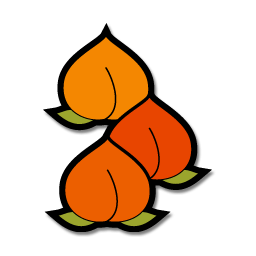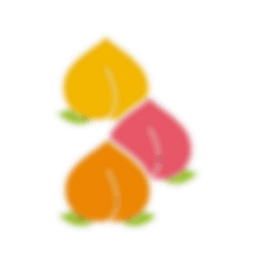Taiko no Tatsujin: Atsumare! Matsuri da!! Yondaime
| Taiko no Tatsujin: Atsumare! Matsuri da!! Yondaime |
|---|
|
Developer: Namco
|
| To do: Maybe the 800 combo and 900 combo voice clips are unused? |
Released only a week after Taiko no Tatsujin 6 hit arcades (and sharing a portion of its new songs), Taiko no Tatsujin: Atsumare! Matsuri da!! Yondaime gives the series a much needed visual makeover, taking full advantage of the higher graphical capabilities of the PlayStation 2 compared to the Namco System 10, the PS1-based hardware which the arcade games ran on - and the previous console games were based on.
NOTE: All of the offsets take in consideration the file DATA.000 unless stated otherwise.
Contents
Sub-Pages
| Notes |
| Data |
Unused Charts
Taiko no Tatsujin Yondaime has 166 charts, associated with the game's 40 songs. Of these, three have branch areas that are normally unseen, and one appears to be completely unused, as noted below:
Unseen Branch Areas
The following charts have unused or otherwise unreachable branch areas that differ slightly from what is seen:
buru_m
The Extreme/Oni chart for the song Buru-chan no oyatsu.
The first branch split happens at measure 18, but both Advanced and Master branch areas before it are populated. However, the only difference is at the note lyric of the second Small Don note at measures 12 and 16, which is "ドン" rather than "ド".
saru_m
The Extreme/Oni chart for the song Yappari saru get you.
The first branch split happens at measure 10, but both Advanced and Master branch areas before it are populated, and sport a few differences:
- At measures 5, 7, and 9, the positions of the Small Don and Small Ka notes at beats 0.75 and 1, and 2.75 and 3 are shifted in the Master branch. This also occurs in the Advanced branch of the former two measures; the Advanced branch of the latter is the same as to what is seen.
| Normal (Seen) | 
|
|---|---|
| Master (Unseen) | 
|
- At measure 8, the Small Ka at beat 0.5 is a 16th later (beat 0.75) in both unseen branches, and there is an additional Small Ka (カッ) at beat 1.5.
| Normal (Seen) | 
|
|---|---|
| Advanced/Master (Unseen) |

|
yokai_m
The Extreme/Oni chart for the song Youkai douchuuki ondo. The first branch split happens at measure 19, but both Advanced and Master branch areas before it are populated. However, the only difference is at the very first measure, in which the final three Small Don notes are notated as "ド-コ-ドン" rather than "ド-ド-ド".
Unused File
skrnb_d, found starting from offset 0xC702000, is an unused chart associated with the song Sakuranbo. While its sync was updated to accomodate the new chart format, it appears to be the same as SKRNB_D, as found unused in Taiko no Tatsujin 6.
Unused Graphics
Donderful! Difficulty
At offset 0xBA4F800 is a package labeled course_dondaful, which contains gameplay sprites associated with the Donderful! difficulty. However, this difficulty never appeared in any console games, with Oni taking its place, so why these graphics were remade is unclear. It's worth to note that Taiko no Tatsujin 7, the first arcade Taiko game to use the higher-quality graphics introduced here, entirely replaces the Donderful! difficulty with Oni.
Unused Song Remnants
Throughout the game's data are several remnants of two unused songs, listed below:
I was born to love you
Refers to the 1995 song by Queen, grouped under Variety. The song also has graphic remnants in Taiko no Tatsujin 6, and would later make a proper appearance in Taiko no Tatsujin: Taiko Drum Master.
Gameplay - 0xC736000
Song Selection Screen
0xC778800
|
0xC791800 - File 52 |
Ranking Screen - 0xC7C5000
File 10
|
File 52
|
Wada Katsu no uta
A Namco original themed after the blue-faced drum. It may or may not have been reformulated into Katsu to Mariko no ekaki uta, which appears in Taiko no Tatsujin: Tobikkiri! Anime Special.
Gameplay - 0xC745800
Song Selection Screen
0xC78D800
|
0xC791800 - File 79 |
Ranking Screen - 0xC7C5000
File 37
|
File 79
|
Miscellaneous
0xC770800
0xC7C5000 - File 97
Early Song Name
At offset 0x83000 is an archive containing lists of other files, as well as of song IDs/titles. Starting from 0xD1C4 upon decompression of the archive is a song list which matches the order seen in the song selection screen. While there's not much interesting in this songlist, the song Dajare de oshare is listed under the earlier name だじゃれの歌 (Dajare no uta). This does not happen in the chart listing which starts at 0x62C8, which also has song titles listed.
Build Date
At offset 0x20F600 of the executable is a build date:
2004-06-04-22-11
The Taiko no Tatsujin series
| |
|---|---|
| Arcade | Taiko no Tatsujin 2 • Taiko no Tatsujin 3 • Taiko no Tatsujin 4 • Taiko no Tatsujin 5 • Taiko no Tatsujin 6 • RT: Nihon no Kokoro |
| PlayStation 2 | Tatacon de Dodon Ga Don • Doki! Shinkyoku Darake no Haru Matsuri • Appare Sandaime • Wakuwaku Anime Matsuri Atsumare! Matsuri da!! Yondaime |
| PlayStation 4 | Drum Session! |
| Nintendo Switch | Drum 'n' Fun! |
| Related | |
| GameCube | Donkey Konga • Donkey Konga 2 • Donkey Konga 3 |
| Nintendo DS | Mizuiro Blood |
- Pages missing developer references
- Games developed by Namco
- Pages missing publisher references
- Games published by Namco
- PlayStation 2 games
- Pages missing date references
- Games released in 2004
- Games released in July
- Games released on July 22
- Games with unused areas
- Games with hidden development-related text
- Games with unused graphics
- To do
- Taiko no Tatsujin series
Cleanup > Pages missing date references
Cleanup > Pages missing developer references
Cleanup > Pages missing publisher references
Cleanup > To do
Games > Games by content > Games with hidden development-related text
Games > Games by content > Games with unused areas
Games > Games by content > Games with unused graphics
Games > Games by developer > Games developed by Bandai Namco > Games developed by Namco
Games > Games by platform > PlayStation 2 games
Games > Games by publisher > Games published by Bandai Namco > Games published by Namco
Games > Games by release date > Games released in 2004
Games > Games by release date > Games released in July
Games > Games by release date > Games released in July > Games released on July 22
Games > Games by series > Taiko no Tatsujin series



